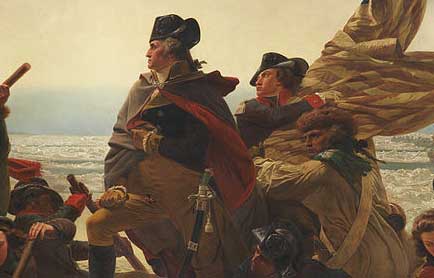non english immigrants During the Revolutionary War

By Awet Amedechiel
By 1790, only one-seventh of the white American population was not British. Although they were relatively small in number, non-English European immigrants were influential in shaping what an American was in the colonial and early national period. They tended to be concentrated geographically, facilitating the preservation of cultural practices from the "Old Country." In addition to a linguistic-cultural diversity, non-English European immigrants brought with them a religious diversity, which met with varying degrees of acceptance in their new American homes.
Few non-British immigrants moved to New England, with most settling in the Southern and Mid-Atlantic colonies. Many groups established communities in particular colonies. German-Americans were concentrated in Pennsylvania, so that, although they made up only 8.6% of the overall European-American population, they comprised about a third of the Pennsylvania population. In fact, the "Pennsylvania Dutch" were actually Germans, with the term "Dutch" believed to be derived from the German word "deutsch," which means "German." There were relatively few Welsh immigrants, but they were well-organized, well-funded, and geographically concentrated in Pennsylvania, so that they exerted more of an influence on the local culture than might be expected considering their population strength. Dutch-Americans made up 3% of European-Americans, but made up a sixth of the New York and New Jersey populations. Swedish-Americans were only 0.7% of the overall European-American population, but their concentrations in the Mid-Atlantic region made them 8.9% of the European-American population in Delaware and 3.9% in New Jersey. French-Americans were more scattered throughout the colonies than other groups, so that they did not comprise a significant minority in any one colony. The European immigrants came to the British colonies for a number of reasons. Many Scottish and Scotch-Irish immigrants, Scots who had settled in Northern Ireland in the 1600s before emigrating to America, were sent to America as punishment for political or religious dissent. Many Irish-Americans came to the British colonies for economic opportunities. Germans generally came for religious or political reasons, largely due to the turmoil in Central Europe during the eighteenth century, rather than for economic opportunity. They maintained a distinct German-American identity, especially in Pennsylvania, and were able to turn the fertile Pennsylvania soil into profitable farms. Other groups, such as the Swedish immigrants, had no lasting ethnicity-based institutions, and were consequently unable to maintain an effective existence as a discrete cultural group. Not until the 19th century did such institutions form, as a new wave of Swedish immigration came to the United States.
The Dutch originally arrived in the Mid-Atlantic region as members of the dominant colonial power. After New Amsterdam became New York and the region fell under British power, the small Dutch population lost its political clout, but maintained its economic power. Many French and Spanish settlers came to parts of North America under the aegis of their countries' colonization of Louisiana, Florida, Texas, and the region west of the Mississippi River. Some groups, such as the Huguenots of France and the Jews of Spain, came to the British colonies to obtain a greater degree of religious freedom.
 >
>